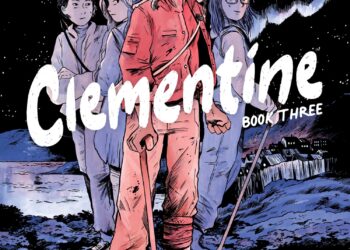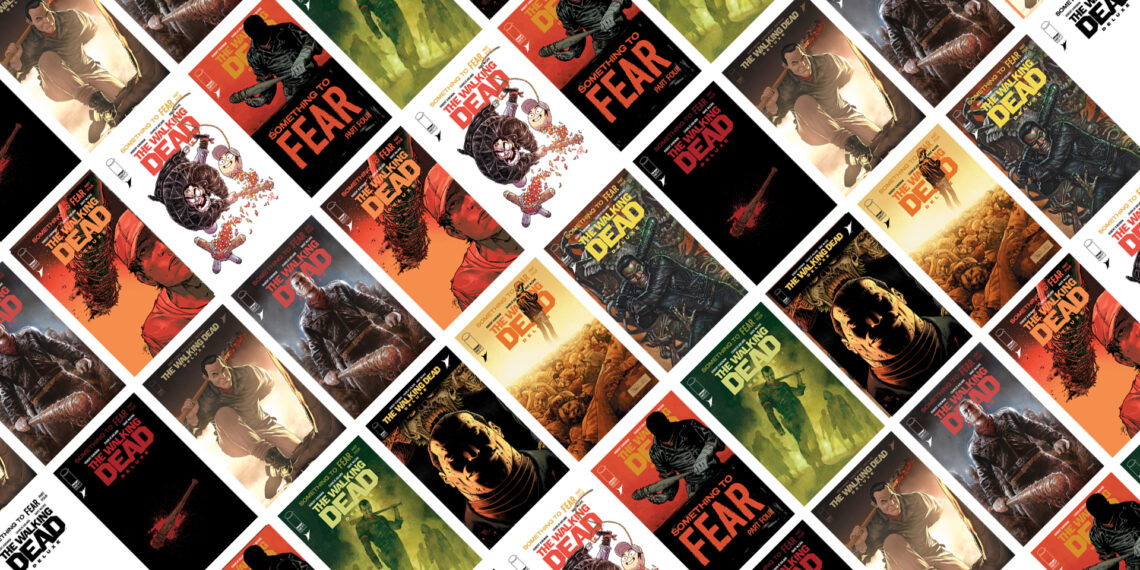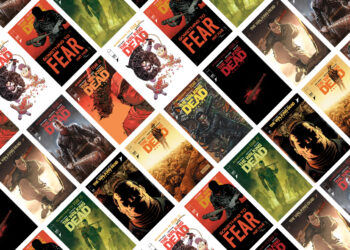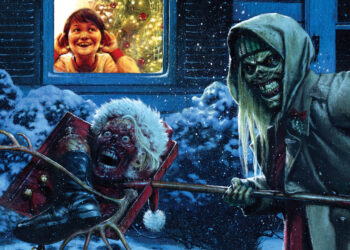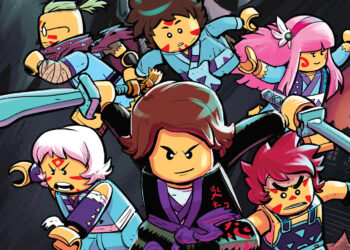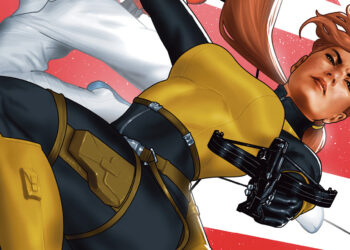Eisner Award-winning titan of terror James Tynion IV is back with two new horror titles this season! In Skybound’s Universal Monsters: Dracula, Tynion reteams with his Department of Truth collaborator Martin Simmonds for a chilling new take on the iconic Bela Lugosi-starring film. And in Image’s The Deviant, Tynion partners with Joshua Hixson for a love letter to David Fincher and The Silence of the Lambs – that also happens to feature a “murder Santa.” Here’s what Tynion had to tell us about both books…
In writing Universal Monsters: Dracula, are you drawing from a lifelong love of vampires, Bram Stoker, and/or the Universal film?
I definitely have a lifelong love of vampires, and the Dracula story in particular. I’ve always been fascinated with vampires, and there is just an innate power to the concept in the image of Dracula. I love the fact that most monster stories make the monster sympathetic in some keyway, and Dracula is always a monster. Even when there are elements to humanize him, like in the Coppola film, giving him a kind of romantic edge, there’s still this unrepentant creature of darkness. There’s so much power in that, and there’s something very singular in that. With Frankenstein, there are different iterations of both the scientist and the monster. There are so many different ways to approach those two characters, whether it leans all the way into the Shelley or the Universal take on the monster, which is a very different take. But with Dracula, there’s something so singular about his character and his presence that has always really stood out to me.
There’s so much lore to the character. Is there an element that served as a springboard for you when you started tackling this project?
It was one of those things where I limited myself. I wasn’t trying to draw from every iteration ever. We’re doing Universal’s Dracula. I wanted to do Universal’s Dracula, and I wanted to come at it like the comic book nerd, the continuity nerd I am; where it’s just like, “Okay, I’m operating from the continuity of the film, and I am going to reflect that continuity fully.” Beyond that, it’s like, “What do I want Martin [Simmonds] to have fun drawing?”

Like the 1931 film, you’ve taken a really elegant approach to the story in this comic. Although there’s no blood in the movie, there’s blood here, but you two apply it in a graceful manner. One wouldn’t mistake it for most 21st century horror comics.
I think there was an understanding of how far we wanted to go with it. This is a book that may not be for a very young kid. But someone fascinated with the image of Dracula should be able to pick it up and read a scary Dracula story. The original movie is accessible to a very wide audience. What drove so much of what Martin and I decided to put on the page is based on what we thought would make the most exciting visual experience of Dracula. I think the blood was essential. Even in a world where we were going for a black-and-white comic, which would be very cool, I would probably push for black, white, and red. Even though we only know that Dracula’s cape is red from the posters and advertising of that movie, the red in that classic Dracula look is just so burned into our minds that it’s part of the aesthetic.
It also seems like an ideal title to expand upon. Dracula may the one classic Universal monster movie that most fans admit is a little flawed, because it was the first of its kind. It was a more faithful adaptation of the Dracula stage play than it was of Stoker’s novel. So there’s room for improvement in a way there may not be with, say, Bride of Frankenstein.
Absolutely. I think when I was initially approached, I was asked which of the Universal Monsters I’d be most interested in tackling, and I think that’s what appealed to me about Dracula. Aside from the simple idea of Martin Simmonds drawing Dracula, which just sounded very cool. Also, the way Martin works, he works in mixed media. So I knew he was going to play into Dracula transforming into a bat and a wolf, a mist, all of these things which are depicted in that film. I knew all of that would be beautiful. But the one singular element from the Universal take – its defining contribution to the mythos beyond the image and voice of Bela Lugosi as Dracula – is the portrayal of Renfield.
By putting Renfield in the Jonathan Harker role, as the one who goes to Transylvania and brings the Count to London, it elevates that character beyond what he was in the novel. To the point that when other stories now adapt Dracula, they elevate the Renfield character, who was fairly minor in the original novel, into a larger role. All of that really comes from this film and the amazing portrayal of the character [by Dwight Frye]. Next to Lugosi’s Dracula, and the close-ups on Dracula’s eyes, which are just so powerful every time you see them in the film. There’s an unsettling quality to the film’s Renfield. Particularly the moment he is found in the hull of the ship. Just his manic smile, the madness in his face. It’s burned into my mind. It’s a great horror image, and it’s a great horror performance. And it’s one of those things that I knew I wanted to tap into immediately. So within the story we lean hard into Renfield. Some of that was just from seeing Martin draw Renfield for the first time, the way he approaches the character. It’s leaning into an even more stylized German Expressionist, nightmare version of this man. Where the humanity has been washed out of him. He’s something less than human, right there on the page. The second I saw Martin’s approach to him, it was like, “All right, there’s gonna be a lot more Renfield in this story,” which feels very appropriate for us, adapting from this iteration of Dracula.
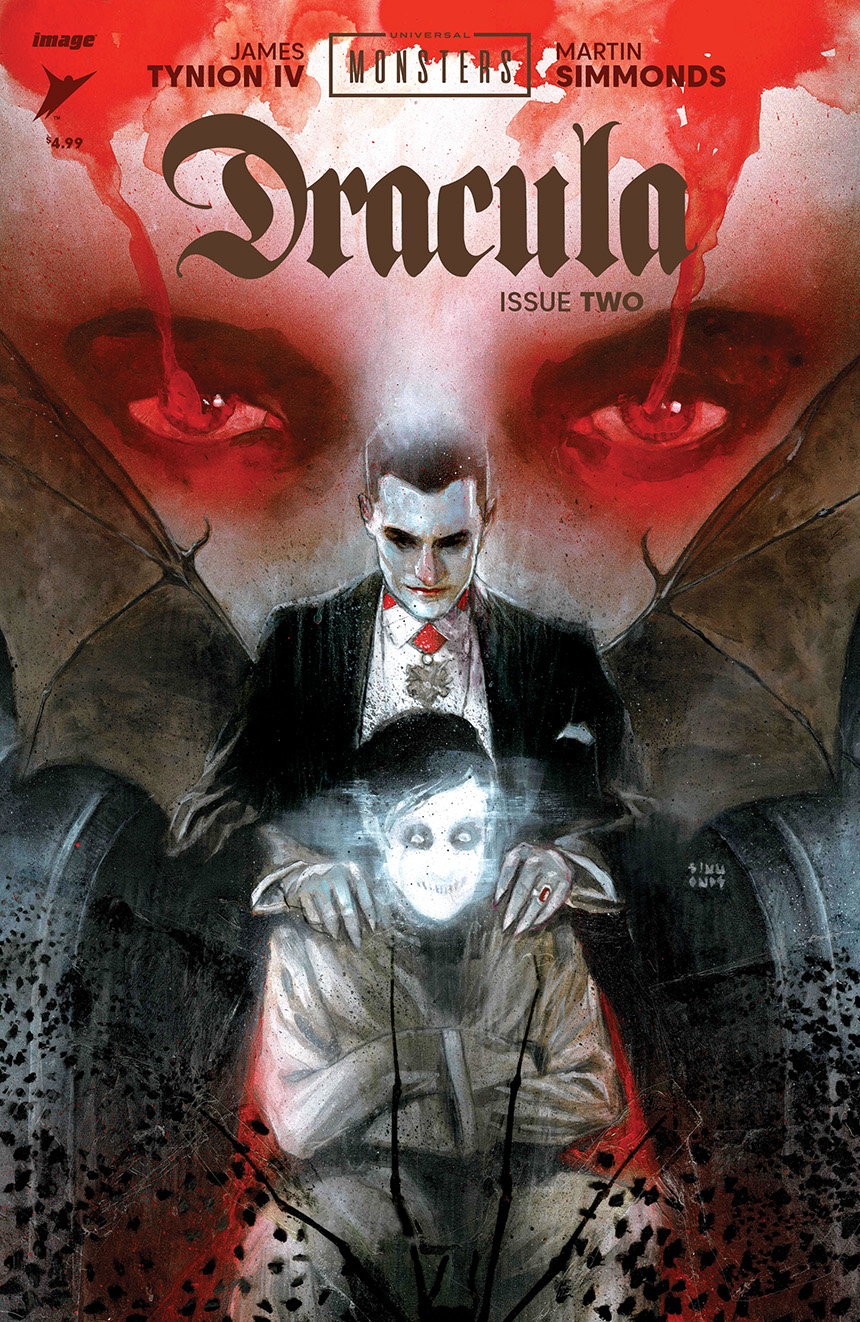
It’s also the relationship between Renfield and Dr. Seward. Dr. Seward is also radically different than Stoker’s version because he’s Mina’s Father, rather than one of Lucy’s suitors. So he’s an older man. He’s trying to understand what’s happening in a changing world, so he becomes more of a mirror to Van Helsing in that role. His relationship to Mina is different and his relationship to Renfield is different, with a younger patient, not a patient of similar age. It changes the whole dynamic. The arc over the four issues leans into the dynamic between Dr. Seward and Renfield. That is the center of our take on this story.
Beyond that, the other thing that Martin and I wanted to bring to this iteration is, we wanted to make Dracula very monstrous, make him an inhuman creature. It’s one of those things where, by playing with the continuity of the film… All of the scenes in the book – and we stretch this a bit in the last issue; where we actually incorporate some scenes from the film – all of the scenes happen in between scenes of the movie. I can place exactly where they all land, and they do all track. At least I hope so. In doing that, we hear reference of the scenes where Dracula has been speaking to these characters, but we don’t get to see the regal side of the count. We only see the monster, the lurking creature in the shadows, taking lives and his incredible power. We see the effect that’s having on everyone around him. It’s an approach to the character that allows us to really lean into the monster of Dracula, rather than the nobility of Dracula.
How did you and Martin Simmonds first come to work together?
It all started while I was trying to find the right artist to work on Department of Truth, the Image series I work on with Martin. I was struggling for a little bit, because I knew I wanted Department of Truth to have this paranoid conspiracy thriller vibe. I wanted it to feel visceral, I wanted it to feel like a photocopy of a photocopy of a photocopy. But I knew I wasn’t going to be able to get Bill Sienkiewicz on interiors, especially at that point in my career. But I couldn’t find anyone who was working in that style. I had known and liked Martin’s style quite a bit, but at the time he was working digitally, and his style was leaning more into… I would liken it mostly to a Phil Noto style. It was moving very much in that direction. But my friend, Matt Rosenberg, pointed me towards some Inktober sketches that Martin had done in pen and ink about different musicians, from a year or so prior. I looked through those images, and they had this proper screechy quality, where you could feel the texture of each image. I reached out to him, and I was basically like, “This may be the rudest email you’ve ever received in your life. I really love your work regardless, but I am looking at these sketches and this style of work is something that I want this book to feel like and be and if you’re not interested in moving that in that direction, I’ll probably go look for somebody else. But if you’re interested in exploring that direction in your art, I want to lean in.” Thankfully, he was like, “Yes, absolutely, I’ve been dying to really lean into that style.”
Over the first arc of that story, he started incorporating all sorts of mixed media into the pages. Aside from Sienkiewicz, Dave McKean was a huge influence on him. It was just leaning into where he had always wanted to go, because he had grown up on those comics, and I had grown up reading those comics. It made Department of Truth what it is, and now it’s just very exciting to unleash him on something so iconic, so you can see that really come to life in his style. I have one of the original pages and it’s incredible, because it’s a hand-painted page and It looks just like the page from the book. It’s in a portfolio but it will be on my wall soon. It’s absolutely gorgeous.
Your work is characterized by its breadth and diversity, as well as its awareness of what’s come before. Department of Truth, for example does something totally new while appealing to fans of, say, The X-Files. While Something Is Killing the Children does something new while appealing to fans of Buffy the Vampire Slayer. Where do most projects begin for you?
It always starts with a feeling more than anything, or, for lack of a better word, the vibe that I want, that I’m going for with the comic. That’s normally what shapes it. That visceral sense of what I want the feeling of reading the comic to be shapes who I approach for the art, and then that shapes how I approach the story, and shapes everything from there. From ten years of working in superhero comics, I think I hit all of the limits of leaning into nostalgia as the central driver of why I was writing something. Nostalgia doesn’t work as a fuel for me in my writing anymore. I like leaning into what I like from what’s come before. In a story like this, I want to play with the subject matter that I’ve been given, but I don’t want to be adhering to it, in a way. I don’t want the experience of reading the book to be “Isn’t the original film so wonderful?” I want the experience of the book to be something entirely in and of itself and deliver an experience entirely in and of itself. In all of my stories, all of my work right now, it’s me trying to lean away from the nostalgic approach to the characters as hard and deliberately as I can while still wearing all of my influences on my sleeve.
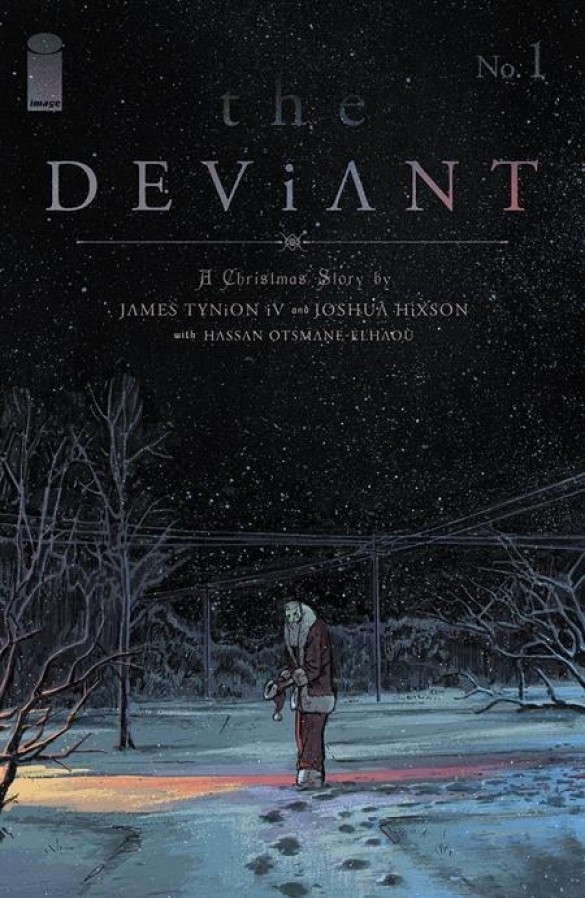
What else are you working on now?
The big thing that’s out from Image is The Deviant, by me and Joshua Hixson. It’s me doing a serial killer story for the first time in one of my creator-owned comics. There’s no science fiction or fantasy element. It’s set in a heightened but grounded world. And it is, in some ways, a love letter to the work of David Fincher and to The Silence of the Lambs, which is my all-time favorite movie.
I grew up in Milwaukee, Wisconsin. I moved there in the early ‘90s, when I was five years old; and I was there until I graduated high school. But my high school was 15 blocks away from the building where Jeffrey Dahmer killed all those people, about 10 years beforehand. Some of my classmates, their parents were reporters who worked on the case. So he, as a figure, loomed large. As a young queer person, stories like Silence of the Lambs and stories of Jeffrey Dahmer affected the first time I found out what gay people were. I wanted to unpack that in a comic book, which is a real messed-up serial killer story that I am very, very excited about. I think Joshua Hixson is doing the work of his career on this book, and it’s also a Christmas story. So if you want a book with a murder Santa, that’s in stores just in time for the holidays, you should pick this book up. If you’d like a David Fincher type book, you should pick this book up. If you like Silence of the Lambs or serial killer stories, or just James Tynion writing a horror comic, you’ll like this book.
For more, sign up for Skybound’s free Insiders rewards program, and check out James Tynion IV’s list of his 5 favorite horror comics!
Universal Monsters © Universal City Studios LLC. All Rights Reserved.





